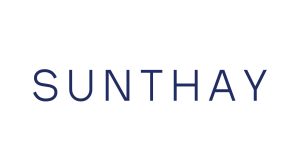Guaranteed Repo is highly efficient for banks, a fact that holds true now and under the clearing mandate for US Treasury repo. In previous articles, we have highlighted its exclusion from the [supplementary] leverage ratio, its ability to reduce RWAs under the Basel III Endgame by 40%-100% compared to other secured funding models (including clearing), and its exclusion from the SEC’s clearing requirement. This article takes the next step and presents its efficiency under the GSIB Surcharge, liquidity coverage ratio (“LCR”) and the net stable funding ratio (“NSFR”).
GSIB Surcharge
Guaranteed Repo transactions are confirmed to be excluded from most elements of the GSIB Surcharge calculation. Critically, the U.S. Method 2 calculation, which is focused on banks’ reliance on “short term wholesale funding” (primarily repo), does not apply for these transactions. This is because guarantors are contingent obligors and not principals on transactions. As a result, banks do not incur short term wholesale funding liabilities. In this regard, Guaranteed Repo is an important innovation compared to how these calculations works today.
Note that the Method 2 calculation is based on gross liabilities. As such, FIN 41 and SLR netting do not reduce the impact of Method 2. As a result, clearing – which does not reduce banks’ gross liabilities – will not reduce the impact of Method 2 on banks’ GSIB Surcharges. Other GSIB Surcharge elements that are also based on gross exposures will similarly not be eliminated by clearing.
A related benefit is that Guaranteed Repo gives banks much needed flexibility to deal with unexpected demands for credit intermediation. The GSIB Surcharge can limit banks’ ability to accommodate unexpected demands for liquidity. Each marginal transaction that causes their surcharge to increase to the next higher bucket is extremely costly because it applies to their entire balance sheet. Guaranteed Repo transactions can provide a valuable “escape valve” to accommodate increases in demand for bank credit intermediation without the same balance sheet impact, enhancing systemic resilience.
The current U.S. GSIB surcharge increases in increments of 0.50%, which is prohibitively high. U.S. regulators have proposed making the surcharge increments smaller (0.10%), but the smaller increments are also tied to smaller increases in GSIB scores. While the greater continuity in the score increments reduces the cost of the marginal trade, the likelihood of triggering an increment is higher. As a result, the flexibility of Guaranteed Repo can be more valuable in smoothing capital requirements when increments are smaller.
LCR
Guaranteed Repo transactions are excluded from the LCR, again because guarantors are not principals to transactions. The guarantee provided by banks is neither a credit facility nor a liquidity facility. As a result, outflows associated with these facilities do not apply.
Still, banks will maintain adequate liquidity to support their contingent obligations as guarantors under their internal liquidity management frameworks.
NSFR
Guaranteed Repo transactions are not recorded on banks’ balance sheets. As a result, the NSFR does not apply for these transactions. While the NSFR applies to certain off-balance sheet transactions (derivatives and commitments), the guarantees furnished by banks are not included in these categories. Guarantees are not derivatives, credit facilities, liquidity facilities or commitments. They are invoked only upon the default of a primary obligor.
Guaranteed Repo is the most efficient secured funding model
Guaranteed Repo transactions eliminate balance sheet usage for banks, reduce costs and RWAs significantly while increasing legal and operational efficiency. Guaranteed Repo is a complementary alternative to clearing that can be adopted globally with minimal effort. It utilizes existing repo market protocols and technology, which minimizes adoption costs.
The efficiencies of the guarantee structure can make repo among the most profitable products for banks while promoting systemic resilience. Repo market participants will benefit from adopting it across all balance sheet-reliant activities.
For more on Guaranteed Repo’s balance sheet efficiency, see:
Guaranteed Repo – Excluded from the US Treasury Clearing Mandate – Is a More Efficient Alternative
This article was sponsored by Sunthay.


